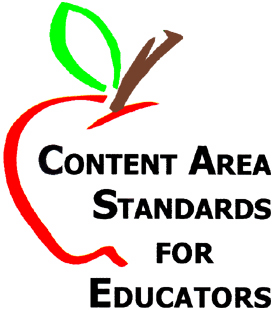 |
Illinois State Teaching Standards Technology Education |

Knowledge Indicators - The competent technology education teacher:
9A. understands the relationship between facts, data, information, knowledge, logic, and wisdom within the structure of information.
9B. understands ways in which data and information can be stored and retrieved.
9C. understands that there are many ways of presenting and transmitting information, such as using graphic and electronic processes and tools.
9D. understands that data and information are communicated using symbols, icons, graphic images, and languages through a variety of visual, auditory, and tactile stimuli.
9E. understands that informational technology communication systems utilize a closed loop system.
9F. understands that the knowledge and information provided through informational technology systems can shape personal views and concepts of reality.
9G. understands that cross-cultural values are transmitted at the local, regional, national, and global levels, using various systems of informational technology.
9H. understands that information has become a commodity for exchange valued by society.
9I. understands that informational technology systems are used in commercial enterprises (e.g., broadcasting companies and the Internet).
Performance Indicators - The competent technology education teacher:
9J. develops a means to communicate information through the use of graphics, (e.g., printing, film, and drafting).
9K. accesses, retrieves, organizes, processes, maintains, interprets, and evaluates information from a variety of sources in order to solve a practical problem.
9L. stores information for retrieval at a later time using various formats such as digital, analog, and graphics.
9M. in order to understand the communication process, uses computers to communicate information from human to human, machine to human, human to machine, and machine to machine.
9N. creates a message that includes symbols in order to communicate to a person.
9O. utilizes informational technology systems in order to communicate over distance and to large, diverse populations.
9P. researches and develops a means to overcome interference in order to improve the communication process.
9Q. uses mathematical knowledge to encode data into a binary form.
9R. evaluates the quality of information received in the communications process through such methods as comparing and contrasting sources, examining relevancy, and investigating the background of experts.
9S. researches ways that the mass media (e.g., newspaper, broadcast and cable channels, and the Internet) transmit messages to the public.